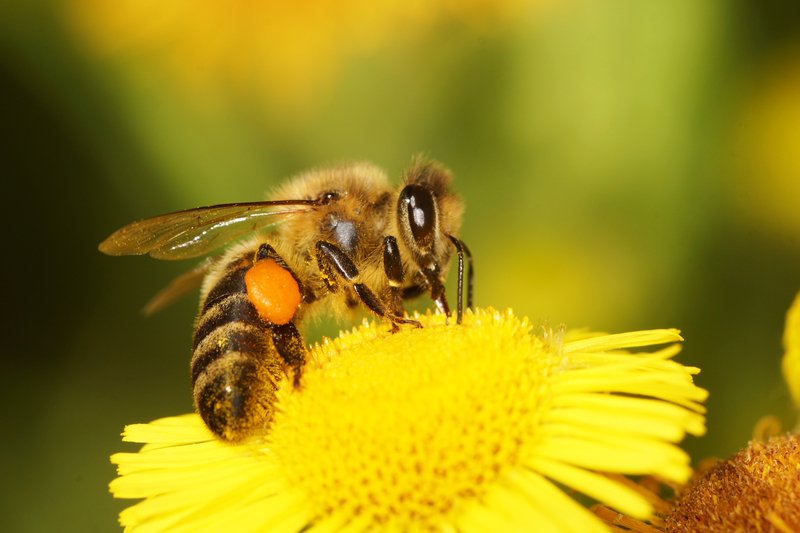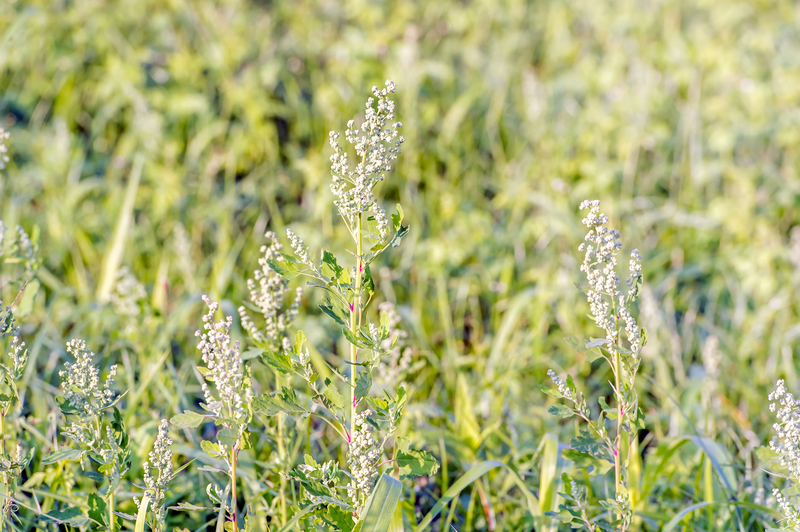Enhance Your Garden's Beauty with 3 Essential Weed Tips
Posted on 29/08/2025
Enhance Your Garden's Beauty with 3 Essential Weed Tips
Every passionate gardener dreams of a thriving, beautiful, and healthy garden--a sanctuary brimming with colorful blooms, lush greenery, and aromatic herbs. However, one persistent challenge stands in the way of this picturesque vision: weeds. Weeds can quickly invade flower beds, vegetable patches, and lawns, competing with your plants for resources and disrupting the aesthetics of your outdoor space. Enhancing your garden's beauty requires effective and sustainable weed management strategies. In this article, you will discover three essential weed control tips designed to help you maintain a gorgeous, weed-free haven. Whether you're a seasoned green thumb or a beginner gardener, these actionable insights will empower you to keep your garden at its stunning best.
Why Weed Control Is Crucial for Garden Beauty
Before diving into the tips, it's important to understand why controlling weeds is central to garden enhancement:
- Weeds outcompete plants for sunlight, water, and soil nutrients, stunting their growth and health.
- Choking out ornamental flowers, vegetables, and herbs, weeds spoil your garden's visual appeal.
- Many weeds harbor pests and plant diseases, jeopardizing your garden's vitality and beauty.
- Unchecked weed growth can lead to increased maintenance time and costs for gardeners.
By mastering these essential weeding tips, you can create an environment in which your favored plants thrive, ensuring a breathtaking landscape all season long.

1. Mulching: A Powerful Defense Against Garden Weeds
What is Mulching?
Mulching is one of the most effective and eco-friendly techniques to suppress weed growth while adding nutrients and beauty to your garden. A mulch is any material--organic or inorganic--spread over the soil surface for protection and improvement.
How Mulch Enhances Your Garden's Beauty & Prevents Weeds
- Suppresses Weed Germination: By blocking sunlight, mulch prevents weed seeds from sprouting.
- Retains Soil Moisture: Mulched soil stays moist and cool, benefiting your plants and reducing watering needs.
- Improves Soil Structure: Organic mulches break down over time, enriching the soil and promoting healthier plant growth.
- Enhances Aesthetics: Mulch gives garden beds a neat, well-maintained appearance, instantly elevating curb appeal.
Choosing the Best Mulch for Gardening
Picking the right mulch material is crucial to successfully deter weeds and beautify your garden:
- Organic Mulches: Includes shredded bark, straw, compost, wood chips, leaves, grass clippings, and pine needles. These not only control weeds but also enrich the soil as they decompose.
- Inorganic Mulches: Think gravel, stone, landscape fabric, or black plastic. These materials block weeds effectively but do not add nutrients to the soil.
How to Apply Mulch for Maximum Weed Control
- Remove existing weeds and debris from your garden bed.
- Spread a 2-4 inch layer of your chosen mulch around plants and over bare soil, leaving a small gap around stems to prevent rot.
- Replenish the mulch annually or as needed to maintain effective coverage.
With proper mulching, you'll achieve superior weed suppression while giving your garden a polished, finished appearance.
2. Consistent Hand-Weeding: Your Garden's Secret Weapon
Why Hand-Weeding is Important
While mulching creates a physical barrier against weeds in your garden, no preventive measure is 100% foolproof. Some weeds will inevitably appear. Regular hand-weeding is a tried-and-true technique that every gardener should master for optimal garden enhancement.
The Benefits of Timely Hand-Weeding
- Prevents Seed Spreading: Pulling young weeds by the root stops them from maturing and producing seeds that propagate throughout your garden.
- Protects Delicate Garden Plants: Selective hand-weeding avoids disturbing plant roots and allows for careful removal around young or close-growing specimens.
- Reduces Need for Chemicals: Manual removal eliminates or reduces dependency on herbicides, making your garden safer for children, pets, and pollinators.
- Improves Soil Health: Less soil disturbance helps maintain natural structure and beneficial microbial life.
Best Practices for Effective Weeding
Follow these hand-weeding tips to effortlessly maintain your garden's splendor:
- Start Early and Stay Consistent: Schedule weeding sessions weekly during peak growing seasons to prevent weeds from taking hold.
- Weed After Rain or Watering: Moist soil makes it easier to pull weeds out completely, roots and all.
- Use the Right Tools: Employ a hand fork, dandelion digger, or hori-hori knife to target deep-rooted or persistent weeds.
- Dispose of Uprooted Weeds: Bag up pulled weeds or compost them only if they haven't gone to seed to avoid spreading them elsewhere.
Pro Tip: Identify and Target Problem Weeds
Learning to recognize the most common local weed species--such as dandelion, crabgrass, chickweed, and bindweed--enables you to take swift action. Some weeds have extensive root systems or can regrow from small pieces, so thorough removal is essential.
3. Smart Planting Strategies to Outcompete Weeds
How Plant Density Affects Weed Growth
One of the cleverest ways to manage garden weeds while improving beauty is to use strategic planting techniques that crowd out weed invaders. By optimizing how--and what--you plant, you can create an environment in which desirable plants dominate, leaving little space or resources for weeds to establish.
Plant Selection and Design Tips for Weed Control
- Grow Groundcovers: Low-growing plants such as creeping thyme, ajuga, or sedum serve as a living mulch, blanketing bare soil and disrupting weed germination.
- Dense Plant Spacing: Arrange ornamentals, perennials, and annuals so mature plants' canopies overlap slightly, shading soil and lowering weed pressure.
- Use Companion Planting: Mix herbs, vegetables, and flowers with similar needs (like marigolds among veggies) to maximize space and create a more weed-resistant garden bed.
- Rotate Plant Varieties: Crop rotation in vegetable gardens prevents weed adaptation and reduces pest and disease cycles.
Layering and Vertical Gardening
Introduce vertical interest and reduce weed-friendly open spaces by:
- Incorporating tall grasses, shrubs, and vining plants.
- Using trellises and arbors for climbing varieties (like beans or sweet peas), which create shady lower zones weeds dislike.
- Layering plant heights--tall at the back, mid-height in the center, and short at the front--ensures rapid canopy closure.
Soil Preparation and Amendment Techniques
Healthy, well-prepared soil not only fosters lush plant growth but makes it harder for weeds to take hold:
- Before planting, remove all visible weeds and thoroughly loosen the soil to disrupt weed roots.
- Amend soil with compost or well-rotted manure to provide nutrients for your plants, helping them grow strongly enough to outpace weeds.
- Regularly top up soil and mulch to maintain a healthy, weed-resistant environment.
Annual and Seasonal Planting Tips to Enhance Beauty and Minimize Weeds
- Early spring planting: Take advantage of bare soil before weeds germinate by getting your desired plants in the ground quickly.
- Succession planting: Continuously sow fast-growing crops (like lettuce or radishes) to keep soil covered and productive all season long.
- Late fall cover crops: Grow rye, clover, or vetch as green manure to smother winter weeds and support soil health.
Additional Weed Control Tips for a Stunning Garden
Use Natural Barriers and Edging
Install physical borders--such as metal edging, brick, or stone--to prevent invasive grasses and weeds from creeping into beds and borders. These techniques protect your garden's design and make maintenance easier.
Apply Pre-Emergent Herbicides Wisely
If you garden organically, skip this step. Otherwise, consider pre-emergent herbicides in early spring to prevent specific weed seeds from sprouting. Always choose products safe for your plant varieties, and use them according to label instructions to minimize environmental impact.
Common Weed Myths: What Every Gardener Should Know
- Myth: Pulling weeds on a sunny day kills them best.
Reality: Weeds are easier to uproot when soil is moist, not when dry and compact. - Myth: All weeds should be composted.
Reality: Only compost weeds if they haven't gone to seed. Otherwise, you risk spreading weed seeds through your compost pile. - Myth: More mulch always means better weed control.
Reality: Excessive mulch can suffocate plant roots and cause rot. Stick to 2-4 inches for most beds.

Maintaining Your Weed-Free Garden for Lasting Beauty
Success with garden weed management is not a one-time effort but an ongoing practice throughout the gardening season. Here are a few final recommendations to keep your garden beautiful and weed-free long-term:
- Inspect regularly: Walk your garden weekly to spot and address weed outbreaks early.
- Stay organized: Develop a seasonal garden maintenance calendar, including weeding, mulching, and planting tasks.
- Encourage biodiversity: Diverse plantings attract beneficial insects, deter pests, and create natural weed barriers.
- Celebrate your progress: Take before-and-after photos, share your results with gardening groups, and enjoy the beauty you've cultivated!
Conclusion: Transform Your Garden with Essential Weed Tips
With these three core techniques--mulching, regular hand-weeding, and smart planting strategies--you can dramatically enhance your garden's beauty. Thoughtful weed management fosters healthy plant growth, lowers maintenance, and delivers a landscape bursting with visual appeal. Remember, the best gardens are not just weed-free but also alive with healthy plants, thriving soil, and vibrant life.
Take these tips to heart, adapt them to your unique garden, and soon you'll enjoy the rewards of a stunning, welcoming, and weed-resistant outdoor space all year round.

